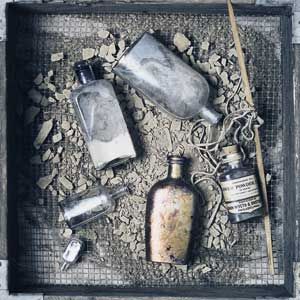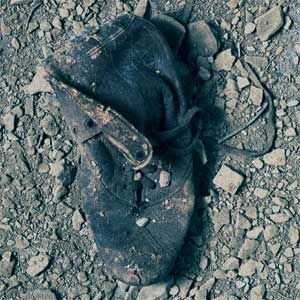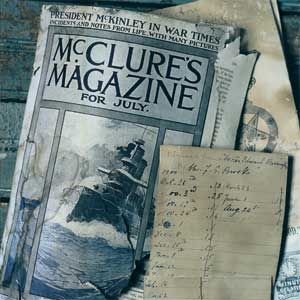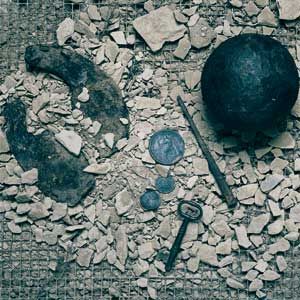
Along a historic row of houses on New Hampshire’s Canaan Street Lake, renovation contractor Lud Leskovar was reworking one 1840s dining room when he removed the largest drawer of a set built into the wall. The drawer itself was less than a yard wide and a foot tall, but it opened up into a space that was 6 feet deep and more than 4 feet high. A trap door at the bottom of the tiny room allowed secret entry into the cellar. “From the basement looking up, you’d never know it was there,” Leskovar says.
Back in the 19th century, Canaan Street was on the main road that led from Boston to Montreal, and Leskovar suspects that the secret room may have been used for spiriting contraband—illicit goods or perhaps runaway slaves—to Canada. Today the room has no special use or value; the current owner didn’t even know about it until Leskovar happened on it. But the excitement of stepping back in history will keep him dining out on the story for years.
That’s what a lot of homeowners dream about: not just possessing a piece of history in the form of an old house, but stumbling upon it, left untouched, within the walls. Few finds are as intriguing (or as large) as a hidden room, but even the most mundane objects hold a particular magic. It’s as if time has been suspended until that unknown door swings open or that ancient newspaper headline is unfolded from behind a wall or that cast-off bottle surfaces from beneath the dirt in the backyard.
If you gathered all the items spit out by old houses, you would soon learn that they fall into one of three categories: the monetary, the maudlin, and the just plain mundane. Here are a few tales of discoveries that we’ve collected over the years from friends, old-house enthusiasts, and our own renovations. Many we found delightful, some a little mystifying, and a couple just a bit frightening.

Findings #1: Hidden Treasures
What tops finding buried treasure in your backyard? The story about buried treasure. For one thing, in the telling the treasure is often more valuable. Helen and Robert Haddad had heard rumors when they bought their 18th-century house in Wendell, Massachusetts: $5,000 was hidden on the property, said workmen who came to fix up the place. “They used to poke around during lunch and bring me ‘clues,'” says Helen.
A few years later, the Haddads’ daughter walked in with a jar that she’d found under a stone wall, not 50 feet from the house. Inside was a lace handkerchief wrapped around four $100 bills and two $2 bills. Was this the bruited $5,000, inflated through gossip? Maybe. It hardly matters, though, for nothing is better than getting to say that your little girl found treasure in her own backyard.
Except maybe finding diamonds in your attic. Rosemary Henderson was cleaning out her Tampa, Florida, house when a bag of the stones fell out of an old ironing board. “I could tell they were real,” Henderson says. The house’s previous owner had hidden them years before and forgotten all about them. She was “shocked” to get them back, says Henderson. “Shocked—and grateful.”
Not everyone who comes upon treasure goes in search of the story—some finds belong to the house. During one couple’s renovation of their 1890 Queen Anne in Cambridge, Massachusetts, a truck knocked down an old clothesline, dragging its base and tearing a gash in the earth. Later, the husband saw a waxed paper bag lying in the dirt and opened it out of curiosity. Inside were bunches of neatly folded bills, tens and twenties totaling $800. No bill was dated later than 1952.
“That was worth a lot of money back then,” says the wife. The couple looked up the currency and found it wasn’t worth more than face value. “But it just proves that people really do bury money in their yard,” the wife says. “And, no, we didn’t dig up the rest of the yard. People always ask us that. We rototilled it and planted grass.”

Findings #2: Archaeological Finds
Even if a found treasure turns out to have no value, it’s still worth something if it connects us to particular people. When an object has stayed in place since its owner dropped it, or hid it, or set it down and then forgot it, archaeologists call it “primary context.” It’s “secondary context” if, say, a rat picks it up and carries it to a nest.
In one attic, the owners were wrenching up floorboards when they came upon two glittering bits of gold—a set of earrings. Later, they found books and magazines from the early 1900s. Most intriguing, though, was a bamboo stick tied to a leather thong between the joists. At the end of the thong was a bottle of opium—empty.
Most of these objects are not just historical tchotchkes or, as archaeologists call them, “accidental discards.” They’re fragments of a story. Like the 43 jelly glasses Jim Collins discovered under the floor of his Hillsborough, New Hampshire, farmhouse. When he asked residents of the town what that was all about, one of them gave a sage nod. “Townie Leed was a drinker,” he said.
Some people take great precautions against unintentional immortality. One day Sharon Welch-Blair and her husband, Bob, had a visit at their bed-and-breakfast in Little Rock, Arkansas, from an old man who said he had worked in the house years before. He walked up to the mantel, touched it, and a secret compartment swung open. It was filled with empty liquor bottles from the Prohibition era. House documents show that a federal marshal owned it during that time.
Scott Jordan finds treasure in the literal wastelands of old New York. He searches defunct privies and cisterns—filled in with garbage when plumbing was installed—that he finds on historic maps. He has dug up 18th-century buckles and a redware pie plate commemorating the Marquis de Lafayette’s 1825 visit to New York; once, “after the archaeologists had gone,” he unearthed a tricorn hat in the South Street Seaport.
Mostly, though, he finds shards and bottles and old coins in people’s backyards. After asking permission to dig, he sets his finds in plaster and paints them, then offers the art to the homeowner. Some of his works sell for hundreds of dollars in galleries. “I make enough for my next dig,” he says. Like bits of ancient pottery, these ordinary objects suddenly have a value far beyond their original purpose, bridging time and connecting the people who touched them.

Findings #3: The Weird and Mysterious
Some former residents don’t just drop historic hints in old houses. They haunt them. In the 1980s, Kathleen Boren bought a 1736 house in Mendham, New Jersey. It was a beautiful house situated on a nice property, with one disturbing feature: Set in the ground at the edge of the woods was a small, rounded tombstone carved with a single name: SOPHIE.
Boren feared she had stumbled upon a little girl’s grave, and the mystery haunted her. She researched for weeks in the town library—to no avail. She finally learned the truth from a neighbor: Sophie, to her relief, was a donkey. A previous owner had kept her as a pet.
Nonetheless, when Boren put the house on the market three years later, the gravestone spooked potential buyers, even when agents told them that the deceased was a beast of burden and not a child. Boren eventually moved the stone into the woods, murmuring apologies to Sophie. It worked: the house sold shortly after.
One ghostly presence actually stared Richard Alleman in the face: a photograph, found behind the mantel of his Greenwich Village apartment, of a young man in the late 19th century. The picture spooked Alleman right off, because the man in it looks exactly like him. His doppelgänger seems to have placed the photo deliberately, along with a business card for a Manhattan hair products store, knowing that somebody would find it in the future. But while another person might have scrammed, Alleman decided it was a sign that the apartment was meant for him.
People used to do this sort of informal “time capsuling” a lot, though not always so artfully. Workmen found a horse’s skull in an interior wall while renovating Rocky Foley’s 1776 house in South Deerfield, Massachusetts. From inside the skull Foley fished out a rolled piece of paper with the names of a militia colonel, his wife, and six children, who lived in the house during the 1840s.
What made the colonel think that the skull of a dead animal would be a fit way to memorialize his family? It’s a mystery, which constitutes at least half the skull’s value. Or maybe just a prank. If so, it’s one that took a century and a half to spring.
Still, the moment that Foley picked up the skull, the colonel came to life, and those 15 decades vanished in an instant. And that’s the value of finding someone else’s possessions in your house. You’re extending that person’s existence into the present, while stretching your own reach into the past. It’s immortality done in two directions. By giving up its secrets, a house proves it has a history and, at the same time, makes us, the owners, feel a little less mortal.
Who to Contact
Ideally, if you live in an old house you should call the state historic-preservation office before you begin work on an addition. But if the backhoe crashes into pottery fragments while breaking ground, it’s not too late. In most states, unless you come across human remains, you’re not obligated to call in the experts. However, proper identification of artifacts—even a dig of the site—could reveal a lot about the earlier occupants.
First, stop work and don’t touch anything, says Nick Bellantoni, PhD, Connecticut’s state archeologist. Sites are often dangerous: Bottle dumps might contain rusted metal, broken glass, even chemicals. Outhouse sites can have methane pockets, and wells do cave in. Plus, poking around yourself will destroy historical context. In some states, it’s illegal to continue without contacting the state first.
Call your state historic preservation office. They know your state’s laws and can help you locate an archeologist. As with any construction project, check references thoroughly.
An archeologist may sample the site, or do a controlled dig—an excavation that keeps the relation of all objects found in context. A project manned by a society or university will most likely cost you nothing. You’ll get a written report, and in most cases you can keep whatever artifacts they find. Sometimes, if the government or a nonprofit institution is interested, you can donate the find and get a tax deduction.
If the state historic-preservation office can’t find an organization to work with your schedule, ask them for names of archeology consultants—essentially for-profit archeologists. But these will cost you: sampling a privy can cost $5,000, and an excavation can cost twice that. It all depends on what they find. Again, check references. Whoever digs in, make sure they’re insured.
